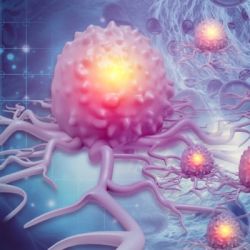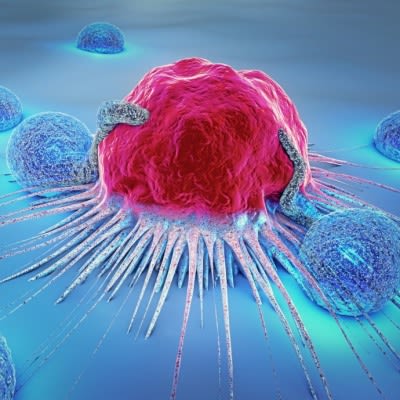The Breast Cancer Index Test Is the First Biomarker to Predict Treatment Benefit in the SOFT Trial
Hologic, Inc. and its subsidiary, Biotheranostics, Inc., announced new study data showing that the Breast Cancer Index test identified which premenopausal patients with early-stage, hormone-receptor positive (HR+) breast cancer benefited from the addition of ovarian function suppression (OFS) to primary adjuvant endocrine therapy. The Breast Cancer Index test is the first biomarker to be evaluated in a cohort from the landmark Suppression of Ovarian Function Trial (SOFT). The translational study results are featured in the official press program at the 2022 San Antonio Breast Cancer Symposium (SABCS) being held from December 6-10, 2022.1 Full study results were presented during the general session #GS1-06 on December 6 at 3:15 p.m. CST.
“There is a significant need for biomarkers to aid in treatment decisions for premenopausal women with breast cancer. Our study presented at SABCS is the first to examine a biomarker’s ability to determine benefit of ovarian function suppression in these women,” said Dr. Ruth O’Regan, Chair of Medicine and Charles A. Dewey Professor at the University of Rochester. “These data found that the Breast Cancer Index test identified women who received benefit from ovarian function suppression as well as those who did not, which is incredibly important given the potential impact of this more intensive treatment approach in young women. While these data are promising, we look forward to further investigating the test’s utility to help inform ovarian function suppression treatment decisions in the future.”
The landmark SOFT trial was an international, three-arm, non-blinded, randomized clinical trial of 3,066 premenopausal women with HR+ breast cancer. The trial demonstrated that the addition of OFS to five years of primary adjuvant endocrine therapy (either tamoxifen or exemestane) reduced the risk of recurrence compared to adjuvant tamoxifen alone.2 OFS typically involves hormonal drug injections with a gonadotropin-releasing hormone (GnRH) agonist or surgical removal of the ovaries (bilateral oophorectomy).3 In an effort to evaluate the potential of a biomarker to assist in patient selection for this more intensive approach, the new study presented at SABCS evaluated the predictive and prognostic ability of the Breast Cancer Index test in a cohort of patient tumor samples (n=1,717) from the SOFT trial. Notably, the patient characteristics in this retrospective translational study were highly representative of the original SOFT trial.
The data found that the Breast Cancer Index genomic assay identified which premenopausal women with early-stage, HR+ breast cancer benefited from more intensive endocrine therapy (exemestane plus OFS) compared to tamoxifen alone. The Breast Cancer Index test identified 58% of women who benefited from the addition of OFS, experiencing an absolute benefit of 11.6%, compared with 42% who did not benefit (p<0.01 in adjusted analysis). The data also found that the Breast Cancer Index test’s predictive performance was generally consistent across subgroups, including nodal status, prior chemotherapy, age and HER2-negative patients. Compared to the benefit shown with exemestane plus OFS versus tamoxifen alone, the benefit for tamoxifen plus OFS versus tamoxifen alone was smaller, which is consistent with data reported from the SOFT trial itself. The study also confirmed the prognostic value of the Breast Cancer Index test, as women with higher Breast Cancer Index test risk scores were more likely to experience disease recurrence.
“Multiple clinical studies and national oncology guidelines affirm the predictive ability of the Breast Cancer Index test for extended endocrine therapy,” said Kevin Thornal, Group President, Global Diagnostic Solutions at Hologic. “These new data further establish the Breast Cancer Index test as a significant endocrine response biomarker and reveal additional predictive capabilities of the test. As we explore its predictive power earlier in a patient’s journey, we aim to uncover broader potential clinical utility in more women with early-stage, HR+ breast cancer.”
About the Breast Cancer Index Test
The Breast Cancer Index test is a molecular, gene expression-based test uniquely positioned to provide information to help physicians individualize treatment decisions for patients with early-stage, HR+ breast cancer. This breakthrough test helps oncologists and patients navigate the difficult trade-offs between taking steps to prevent recurrence of their disease and facing significant side effects and safety challenges related to unnecessary treatment. The Breast Cancer Index test has guideline designation from the American Joint Committee on Cancer for cancer staging based on molecular profile. The American Society of Clinical Oncology (ASCO), the European Group on Tumor Markers (EGTM) and St. Gallen acknowledge the Breast Cancer Index test as a biomarker to inform the chemotherapy decision; and ASCO, EGTM and the NCCN Clinical Practice Guidelines in Oncology (NCCN Guidelines®) acknowledge the Breast Cancer Index test as a biomarker to inform the extended endocrine treatment decision.4 It is the only validated, commercially available test that predicts benefit from extended endocrine therapy. The Breast Cancer Index test is intended for routine clinical use, and treatment decisions based on results are the responsibility of the physician. It is a laboratory developed test (LDT) performed in a single CLIA-certified and CAP-accredited diagnostic laboratory and is not required to be cleared or approved by the U.S. Food and Drug Administration. For more information, visit www.breastcancerindex.com.
Click here for the latest Women's Health news
Source: Hologic
References:
- https://www.sabcs.org/Program/Schedule-at-a-Glance. Accessed November 10, 2022.
- https://www.ncbi.nlm.nih.gov/pmc/articles/PMC4341825/. Accessed November 10, 2022.
- https://www.hopkinsmedicine.org/kimmel_cancer_center/cancers_we_treat/breast_cancer_program/treatment_and_services/survivorship/endocrine_therapy/premenopausal_women.html. Accessed November 10, 2022.
- Referenced with permission from the NCCN Clinical Practice Guidelines in Oncology (NCCN Guidelines®) for Breast Cancer V.4.2022. © National Comprehensive Cancer Network, Inc. 2022. All rights reserved. Accessed November 10, 2022. To view the most recent and complete version of the guideline, go online to NCCN.org. NCCN makes no warranties of any kind whatsoever regarding their content, use or application and disclaims any responsibility for their application or use in any way.






















